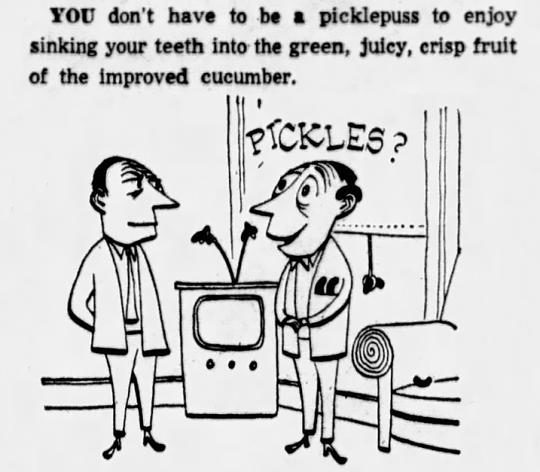Text
Have you REALLY lost your scissors if you aren't walking around making scissor motions with your fingers in an attempt to lure them back out?
83K notes
·
View notes
Text
29K notes
·
View notes
Text
you dont have to be a picklepuss to enjoy sinking your teeth into the green, juicy, crisp fruit of the improved cucumber
99K notes
·
View notes
Text
« A closer look at some of the examples of messy and tactile activities from the Ice Age, perhaps unsurprisingly, reveals the presence of children. Once assumed to be the enigmatic marks made by trance-induced shamans practising some otherworldly hunting magic, archaeological research is increasingly showing that making cave art was a social, group-wide behaviour – and children were active participants.
A recent study by a team of researchers in Spain found that hand-stencils made deep within caves represent all members of society. Children, and even infants younger than three years old, participated in making hand-stencils alongside adolescent, adult and elderly individuals. The youngest undoubtedly would have had to be held still by an adult as ochre was sprayed over their hand to produce the stencils, giving an intimate glance into the making of this art. As discussed by the authors of this study, the social nature of this behaviour suggests that the making of art was not limited to a privileged few, but was an activity that involved everyone, enhancing group cohesion in the process. […]
Making hand-stencils seems to have been a practice that was repeated by different cultural groups throughout the Ice Age world, from the caves of Pech Merle and Gargas in modern-day France to Leang Timpuseng cave in Sulawesi. […] Even within the same cave, hand-stencils may be separated by several thousand years, implying that people returned to the same place and added their hands to the assemblage of their ancestors’ hands. This behaviour was likely a visceral experience for Ice Age people; an ancient form of handshake between hands reaching through time, and a more-or-less permanent record of having been there. […]
How much more meaningful is it, then, that children actively participated in this important cultural practice? Not only did adults install themselves within these environments, engaging with the hands left by their ancestors in the process, but they encouraged their children to do so too. […] Echoes of children’s playful behaviours can also be glimpsed in […] finger flutings – marks made by tracing fingers through the soft clay-like ‘moonmilk’ that coats cave walls. [They] were often made by children, perhaps as young as five years old. There is a distinctly childlike feel to these ribbon-like marks preserved in the cave wall; one can picture children running alongside the wall, fingers firmly pressing into the pliable, muddy surface.
[…] Children’s footprints are also often present in the same caves […]. The footprints are sometimes chaotic, with small feet overlapping one another and no clear direction from one area of the cave to another. Some have suggested this represents children dancing, painting a vivid image of children playing under the dim glow of firelight. Small crawl spaces within caves, too, were perhaps only accessible to children. The small, clumsy drawings within these spaces likely reflect children practising their own art […].
Ice Age children, much like our own children, joyfully engaged with the world in messy and creative ways – and, it seems, were actively encouraged to do so by their parents. These hand-stencils create an intimate connection with these children. Their small hands, which last touched the rock surface of cave walls tens of thousands of years ago, reach out to us from that distant and largely unknowable past. It is as if they are enticing us to connect with them and reach back in response: a tender handshake across time. »
— Izzy Wisher, “The art of Ice Age children offers a tactile sense of the past”
9K notes
·
View notes
Text



H2O just add water but it's 40 year old office worker Dave
82K notes
·
View notes
Text
masculine looking cishet guy wearing an ”ask me about my pronouns” shirt. when you ask about his pronouns he really excitedly explains to you that they’re he/him.
105K notes
·
View notes
Text
“you support gay rights so you must be gay”
i support animal rights do i look like a fucking alpaca to you
921K notes
·
View notes
Text
god the loneliness of young adulthood is so real
82K notes
·
View notes
Text
As much as I love ‘I would kill for you’, it kinda really loses its impact if the person saying it is a villain who already kills at the slightest provocation
’I would refrain from killing for you, I would spare them all if you asked me’ is a very sexy alternative, and a much more powerful declaration of love coming from a character prone to violence
44K notes
·
View notes
Text
OKAY HERE THIS ONE SHOULD WORK REGARDLESS OF LIGHT OR DARK MODE USAGE >:]


70K notes
·
View notes









